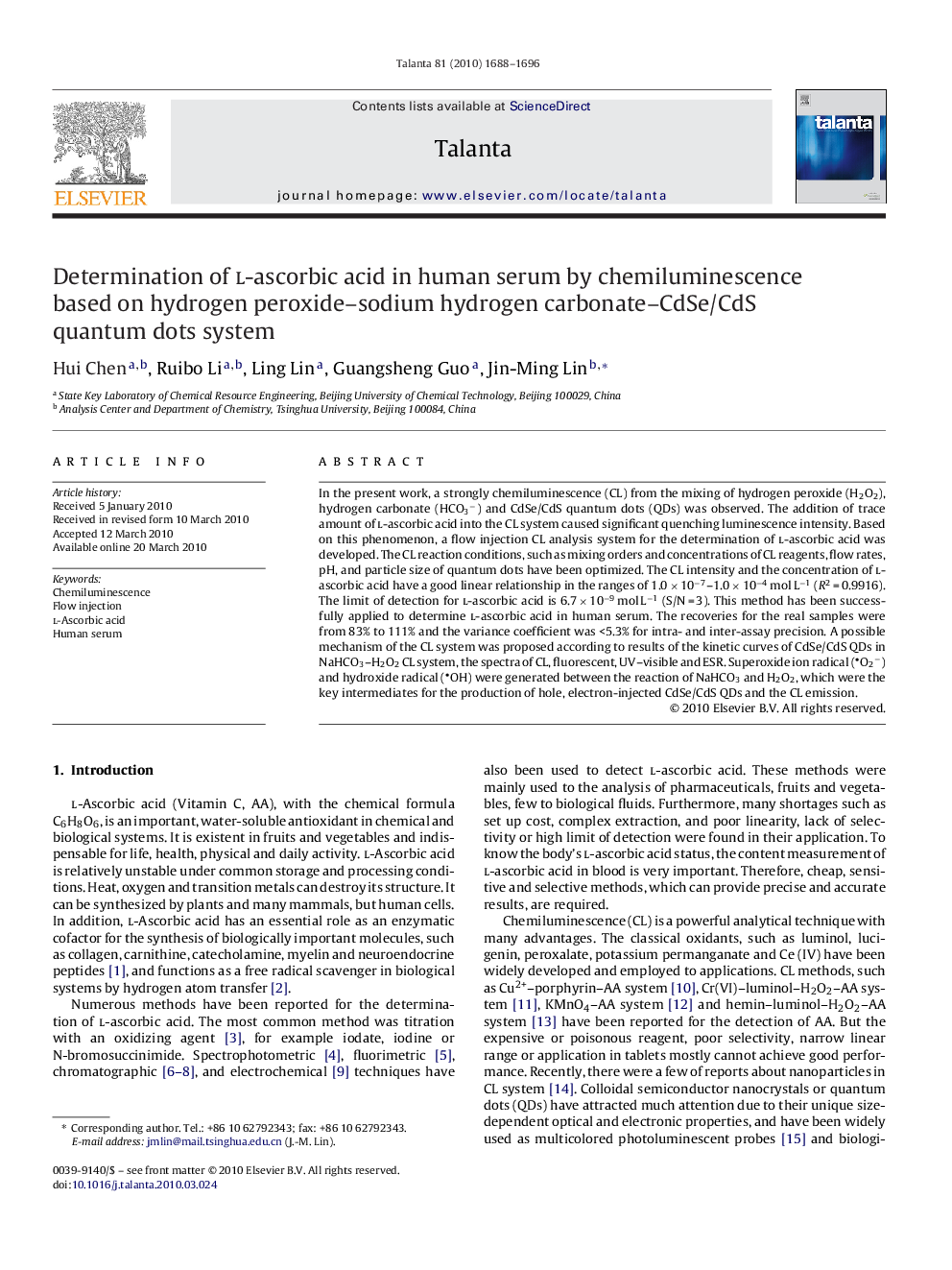| Article ID | Journal | Published Year | Pages | File Type |
|---|---|---|---|---|
| 1242690 | Talanta | 2010 | 9 Pages |
In the present work, a strongly chemiluminescence (CL) from the mixing of hydrogen peroxide (H2O2), hydrogen carbonate (HCO3−) and CdSe/CdS quantum dots (QDs) was observed. The addition of trace amount of l-ascorbic acid into the CL system caused significant quenching luminescence intensity. Based on this phenomenon, a flow injection CL analysis system for the determination of l-ascorbic acid was developed. The CL reaction conditions, such as mixing orders and concentrations of CL reagents, flow rates, pH, and particle size of quantum dots have been optimized. The CL intensity and the concentration of l-ascorbic acid have a good linear relationship in the ranges of 1.0 × 10−7–1.0 × 10−4 mol L−1 (R2 = 0.9916). The limit of detection for l-ascorbic acid is 6.7 × 10−9 mol L−1 (S/N = 3). This method has been successfully applied to determine l-ascorbic acid in human serum. The recoveries for the real samples were from 83% to 111% and the variance coefficient was <5.3% for intra- and inter-assay precision. A possible mechanism of the CL system was proposed according to results of the kinetic curves of CdSe/CdS QDs in NaHCO3–H2O2 CL system, the spectra of CL, fluorescent, UV–visible and ESR. Superoxide ion radical (O2−) and hydroxide radical (OH) were generated between the reaction of NaHCO3 and H2O2, which were the key intermediates for the production of hole, electron-injected CdSe/CdS QDs and the CL emission.
